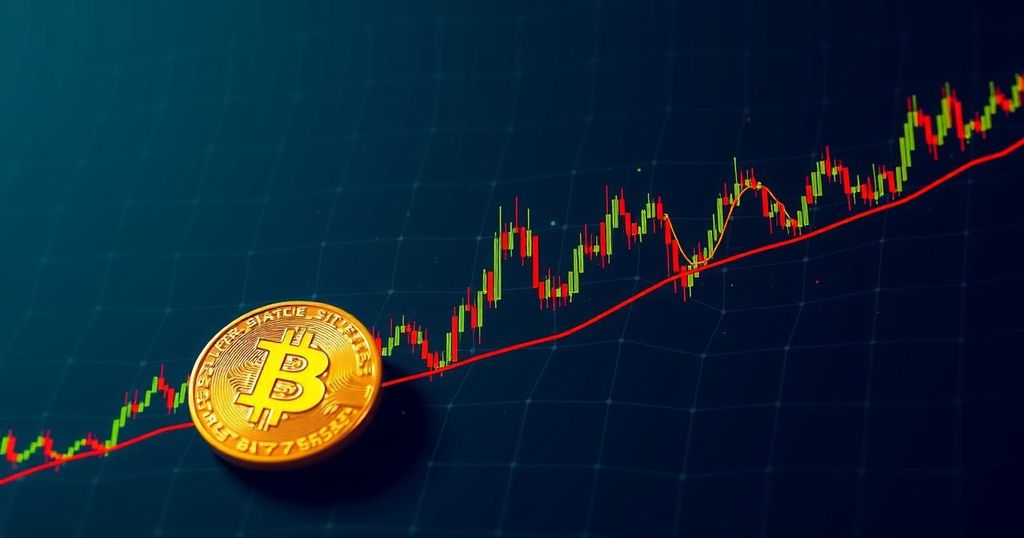Analyzing Bitcoin’s Price Dynamics and Potential Post-Election Surge
Bitcoin’s RSI reflects historical patterns during election years, suggesting potential for a post-election price surge. Recent price stability above key levels and over $3 billion in ETF inflows signal strong institutional interest, while geopolitical tensions have shown Bitcoin’s resilience. Analysts project BTC may test $70,000 soon, highlighting its long-term growth potential within the context of the Bitcoin Power Law.
As Bitcoin (BTC) continues to gain traction in the financial markets, its performance leading into the U.S. elections has drawn considerable attention. The Relative Strength Index (RSI) for October indicates a notable similarity with historical election cycles in 2012, 2016, and 2020, with the RSI hovering around 65 in each of these years. Analysts speculate that this historical pattern may suggest the possibility of a price increase, particularly if Bitcoin sustains positive sentiment after the elections. By late October, Bitcoin’s price remained robustly positioned above the critical channel it breached earlier in the month, which has allowed BTC to preserve its bullish momentum despite unfavorable developments. Analysts view this positioning as instrumental in facilitating Bitcoin’s potential ascent toward the $70,000 threshold. Nonetheless, there exists the risk of price volatility related to the impending election results and their consequent market implications. Additionally, geopolitical uncertainties have influenced Bitcoin’s price dynamics. Recent military actions in Israel prompted swift yet short-lived drops in BTC’s value. For instance, following heightened tensions with Iran, Bitcoin’s price experienced a decline of over 4% but quickly rebounded by approximately 6.6% within hours, showcasing Bitcoin’s resilience and capacity for rapid recovery following temporary downturns. On a more optimistic note, substantial inflows into Bitcoin Exchange-Traded Funds (ETFs) since October 10, with over $3 billion in investments, have signaled strong market interest. This influx suggests a growing demand among institutional investors, leading to speculation that Bitcoin could soon approach the $100,000 mark. While these ETF inflows are significantly linked to investments by large entities such as BlackRock, it is important to note that spot ETFs function via a 30-day settlement period rather than instantaneous transactions. In October alone, BlackRock augmented its holdings by an additional 17,111 BTC, now totaling over 400,000 BTC, reflecting its considerable investment in the market. Long-term growth projections for Bitcoin have also emerged, articulated through the concept of the “Bitcoin Power Law,” which posits that Bitcoin’s price trajectory mirrors the early adoption curve of the internet. Predictions from some analysts suggest that this pattern may continue for another decade to fifteen years before possibly transitioning to a more stable growth model. Although the Power Law theory is still a topic of debate, it underscores the sustained interest and optimism surrounding Bitcoin’s long-term potential. Amid these developments, Bitcoin’s recent price movements coupled with historical RSI readings cultivate a bullish outlook for a post-election rally. Despite the uncertainties connected to election outcomes, the ability of Bitcoin to maintain significant support levels fosters confidence within the market. As Bitcoin navigates through this consequential election period, its core support levels remain intact, and the influx of institutional interest indicates that investors may anticipate further upward momentum. With its RSI reflecting past election cycles and the positive signals from ETF investments, many believe that Bitcoin is positioning itself for potential new highs in the near future, reinforcing its standing as a key digital asset in the evolving financial landscape.
The Relative Strength Index (RSI) is a widely respected momentum oscillator that measures the speed and change of price movements. It is primarily utilized by traders to assess whether an asset is overbought or oversold. Historical data indicates that fluctuations in BTC’s RSI during critical events, such as elections, often correlate with price movements. Additionally, Bitcoin has increasingly gained popularity among institutional investors, leading to the emergence of Bitcoin ETFs which offer a regulated avenue for investment in cryptocurrency. Given its speculative nature, Bitcoin’s performance is particularly susceptible to both geopolitical events and macroeconomic changes, which have occasionally led to swift fluctuations in price.
In summary, the interplay between Bitcoin’s historical patterns, especially its RSI during election years, distinctive price movements, and substantial institutional interest through ETF inflows creates a promising landscape for potential price rallies in the near future. As Bitcoin maintains its support levels and resilience in the face of geopolitical challenges and upcoming elections, market observers remain cautiously optimistic about its capacity to reach new heights, further solidifying its status in the financial domain.
Original Source: www.thecoinrepublic.com








Post Comment